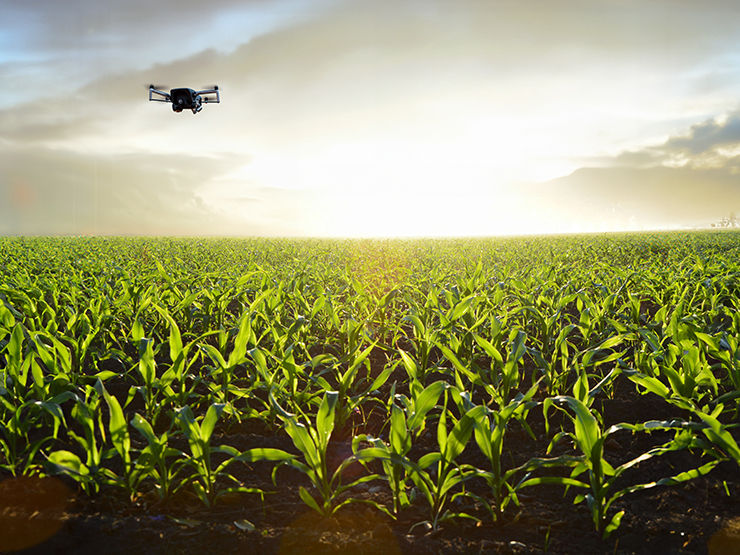
Corn is the dominant crop in the United States, covering more than 90 million acres each year, generating over $70 billion annually, making it the country’s most profitable crop. Corn’s financial success comes from its versatility, serving as a key ingredient for livestock feed, ethanol fuel, processed foods, and international exports, a cornerstone of the country’s economy. However, like all agricultural industries, corn growth faces challenges that make its production increasingly difficult and costly.
Corn farmers face challenges in managing crop health and nutrient application, as factors such as uneven nitrogen distribution and plant stress can limit yields and efficiency. Managing these issues is essential for both profitability and sustainable production. To address these issues, institutions across the United States invest billions each year in research and technology aimed at improving corn growth and resilience. Federal agencies like the USDA allocate over three billion dollars annually toward agricultural research, with programs supporting better soil health, climate adaptation, and pest management.
One emerging area of research focuses on using drone technology to help farmers monitor and improve corn health more efficiently. At the University of Missouri (MU), a team led by doctoral student Fengkai Tian and Associate Professor of Agricultural Systems Technology Jianfeng Zhou in MU’s College of Agriculture, Food and Natural Resources (CAFNR) developed a method using drones equipped with multispectral cameras to measure chlorophyll levels in corn leaves across entire fields.
Fengkai Tian is a bioengineering Ph.D. candidate at MU specializing in remote sensing and artificial intelligence for agricultural applications. He holds a master’s degree in Data Science & Analytics and a bachelor’s degree in Statistics with a minor in Mathematics, all from MU. Tian has served as first or second author on multiple journal and conference publications under the guidance of Professor Zhou in the Precision and Automated Agriculture Lab, focusing on applying drone technology and advanced data analysis to improve crop monitoring and management.
Tian’s most recent research project represents a broader effort to bring cutting-edge technology into corn production. The project, titled “Estimating corn leaf chlorophyll content using airborne multispectral imagery and machine learning,” was conducted in collaboration with the USDA Agricultural Research Service. By combining the expertise of MU researchers with federal resources, Tian and his team were able to develop methods that provide farmers with more precise and scalable tools for monitoring crop health. This work demonstrates how drone technology and advanced data analysis can be integrated to address the challenges of modern agriculture.
In the study, the researchers deployed drones equipped with multispectral cameras to capture detailed images of corn fields across mid-Missouri. The drones collected data in specific wavelengths, including near-infrared and red-edge bands, allowing the team to estimate chlorophyll levels in corn leaves throughout the fields. These measurements were combined with soil data and analyzed using machine learning algorithms to generate accurate, field-wide assessments of plant health. By providing this level of insight, the technology enables farmers to make more informed decisions about fertilizer application, irrigation, and other crop management practices, improving both yield and sustainability, particularly when optimizing nitrogen application.
Professor Zhou points out that accurate nitrogen application is one of the biggest challenges corn farmers face. “We want to help farmers increase their yields while using fewer chemicals that can impact the environment,” Professor Zhou said. “Precision agriculture can help farmers apply nitrogen at the right time to the right location in the right amount.” Tian’s model makes advanced technology more accessible and aligns with the growing trend of precision agriculture services. Additionally, the drone system Tian and his team developed bridges multiple job opportunities.
The innovative approach has the potential to allow farmers to continue doing what they do best without needing expertise in specialized drone technology. “Going forward,” Tian said, “farmers could potentially contract with agriculture technology companies who can fly the drones and process all the data so the farmers can benefit from the technology without having to be experts in it themselves.” As corn continues to play a vital role in American agriculture, innovations like Tian’s drone-based monitoring system show how research and technology can help farmers maintain high yields while promoting sustainability. By addressing the challenges of modern agriculture, these advancements ensure that corn can continue to meet the nation’s food, fuel, and export needs.
|